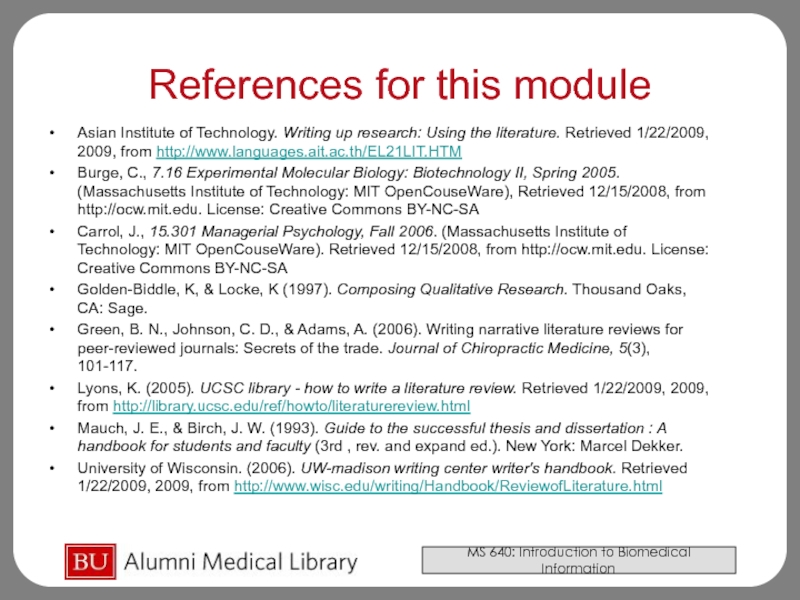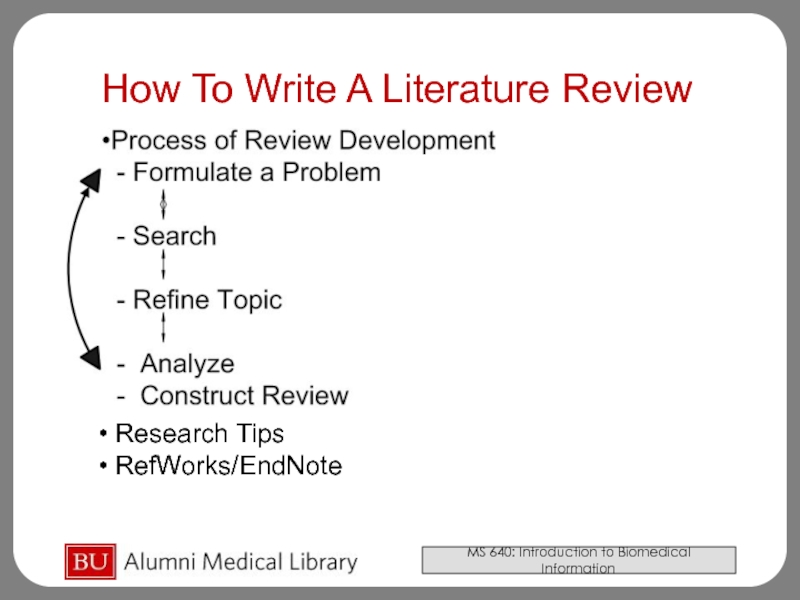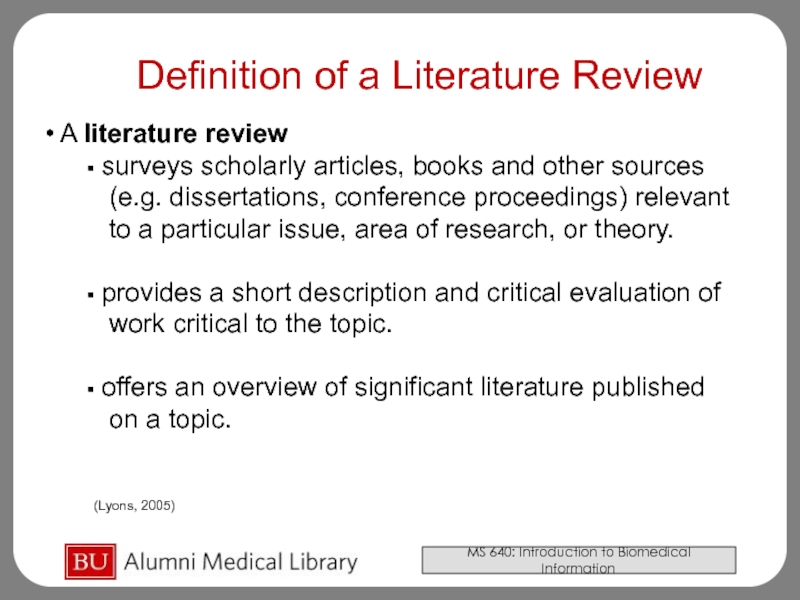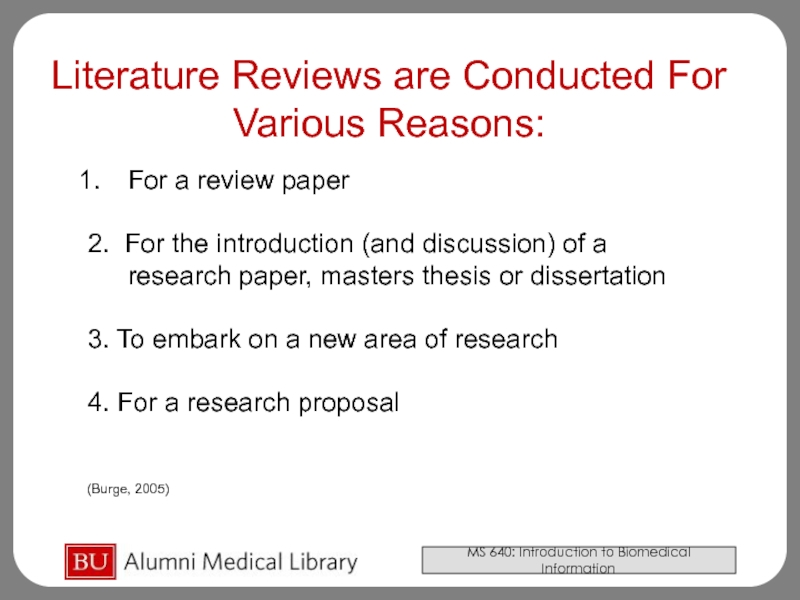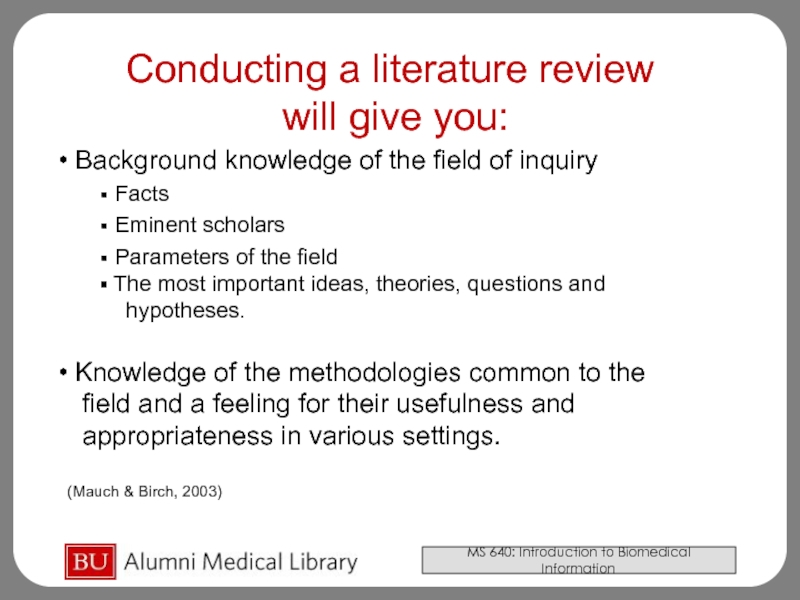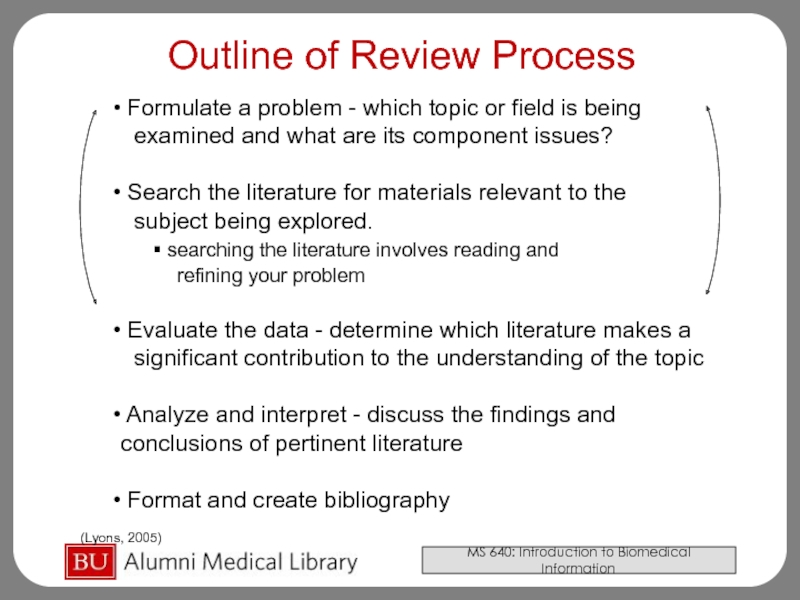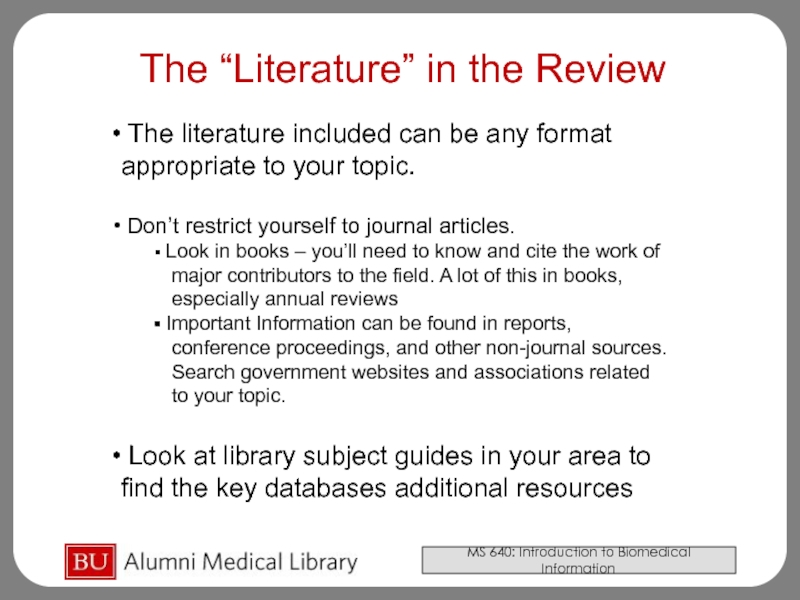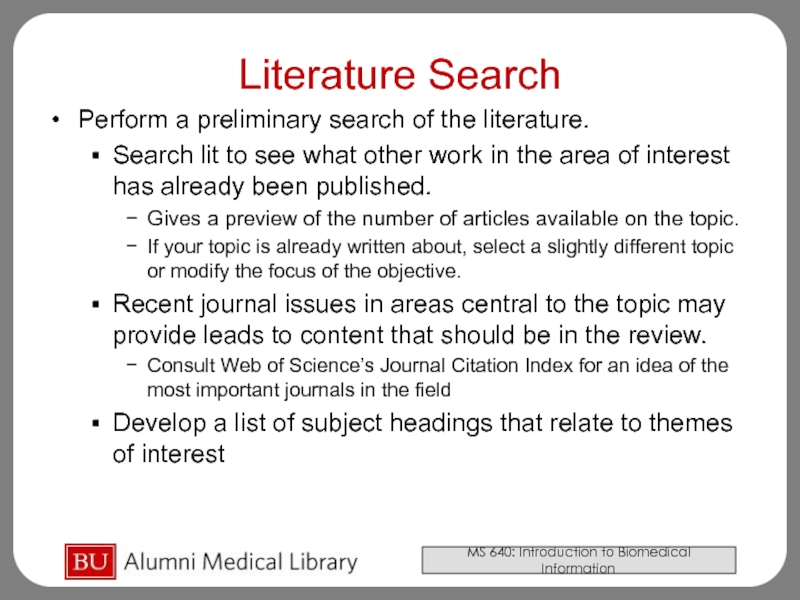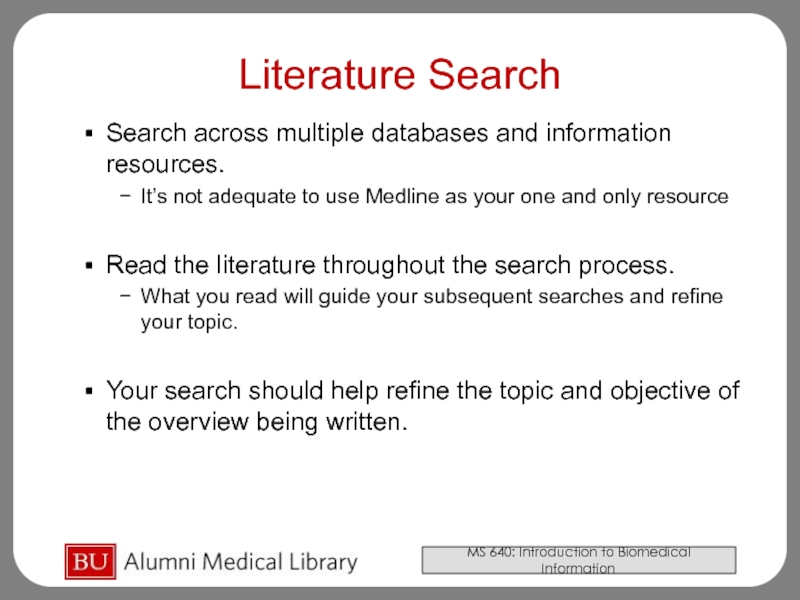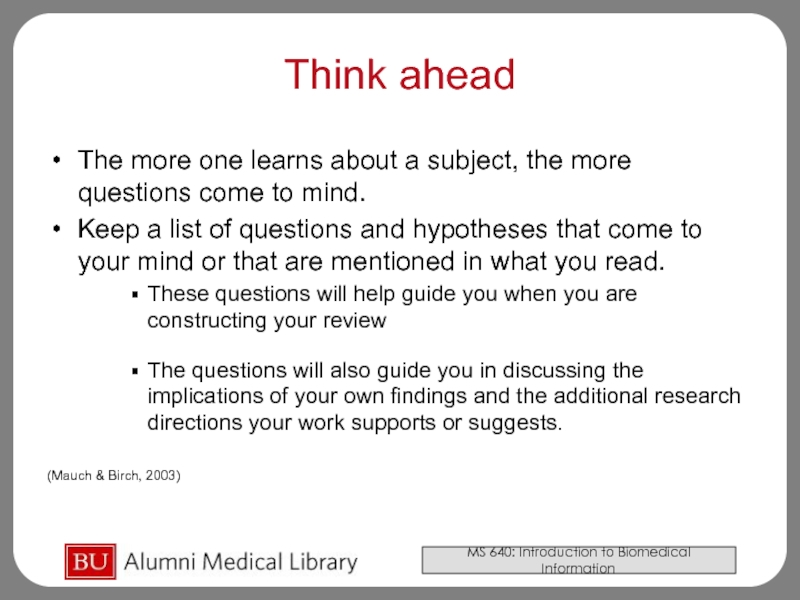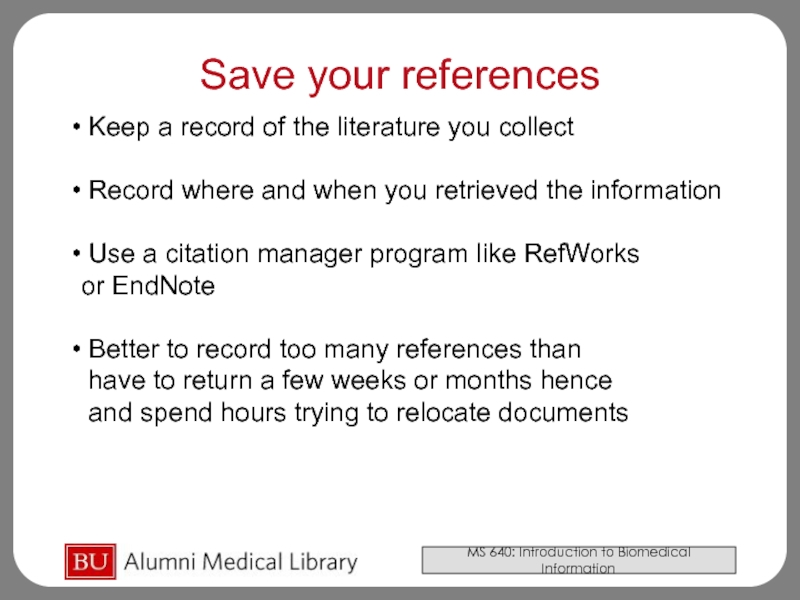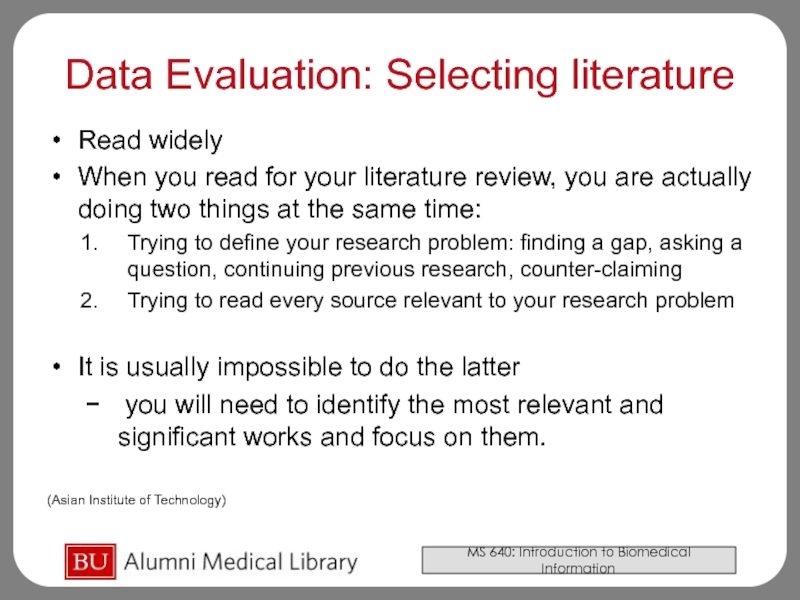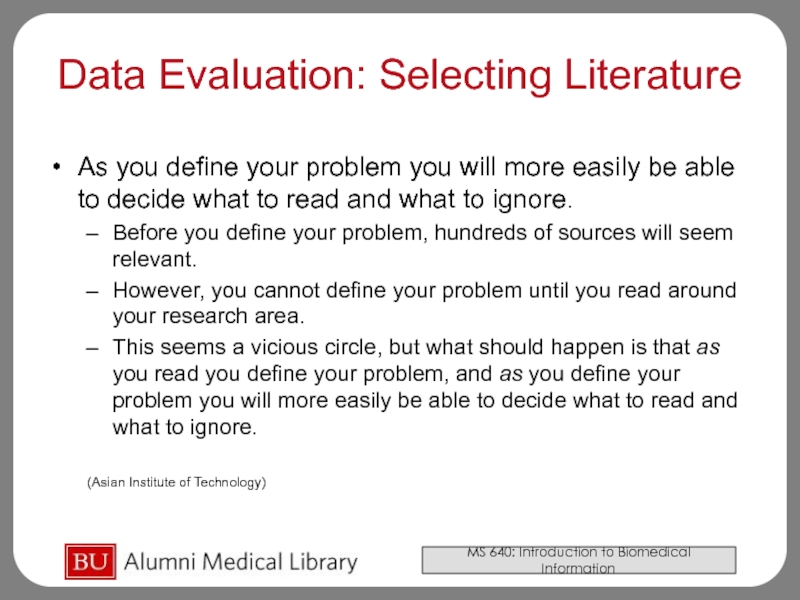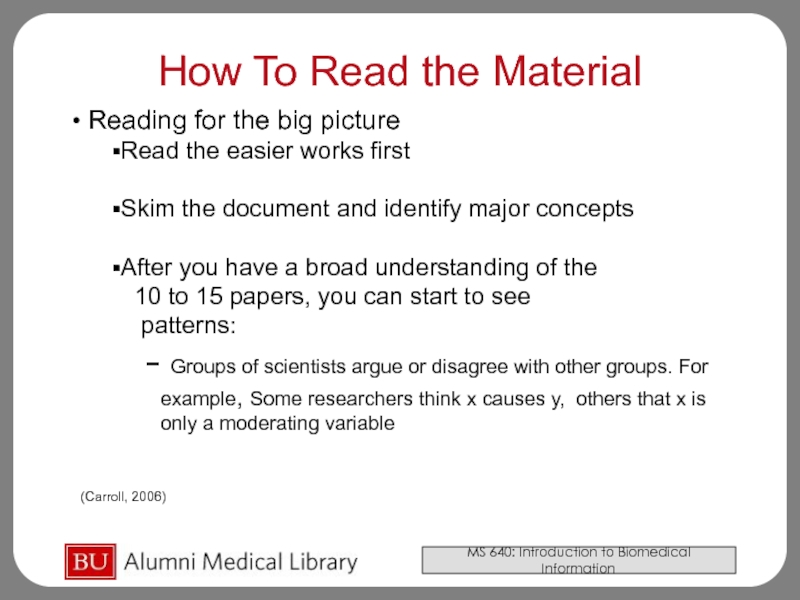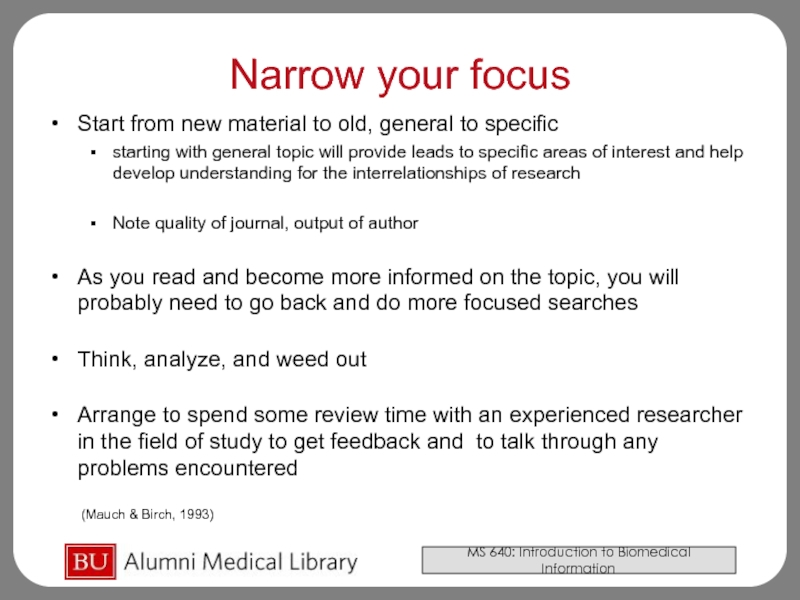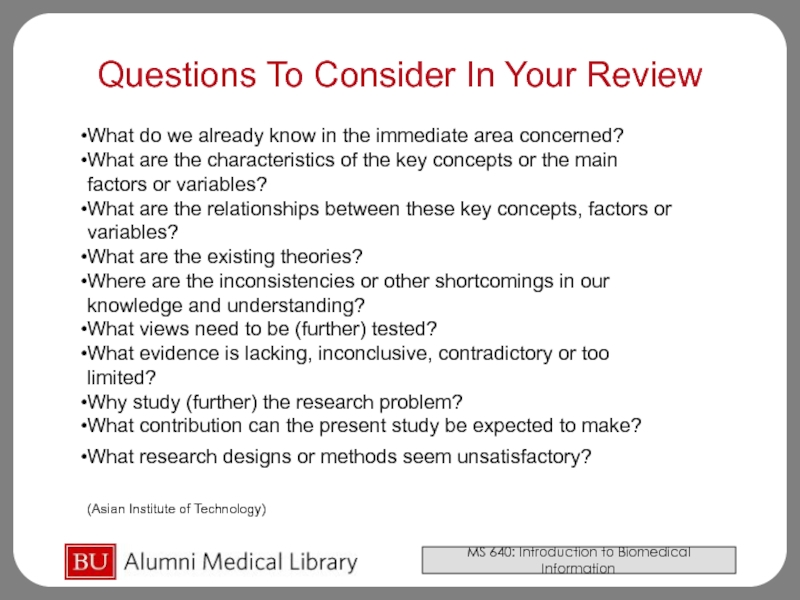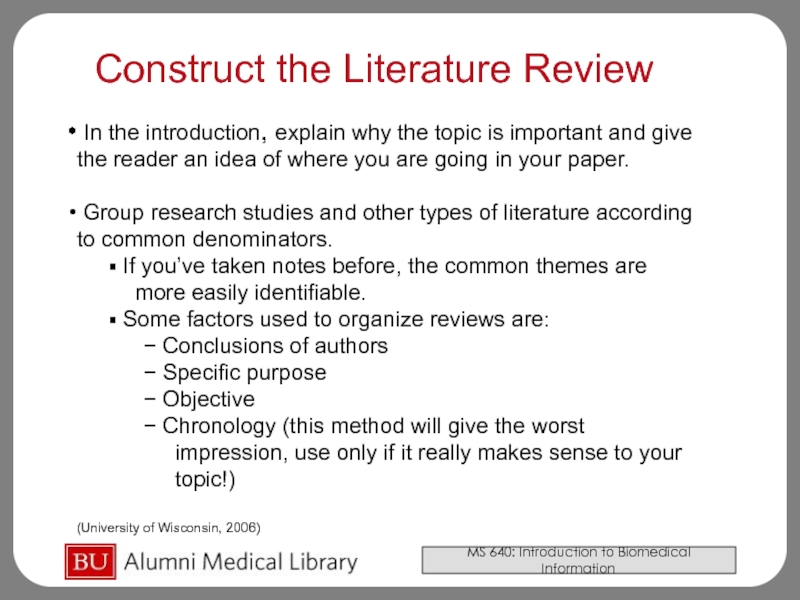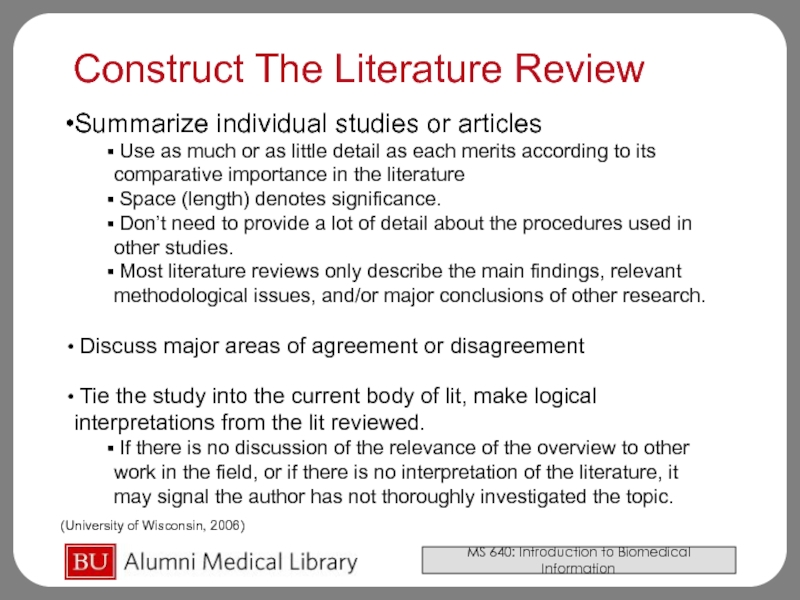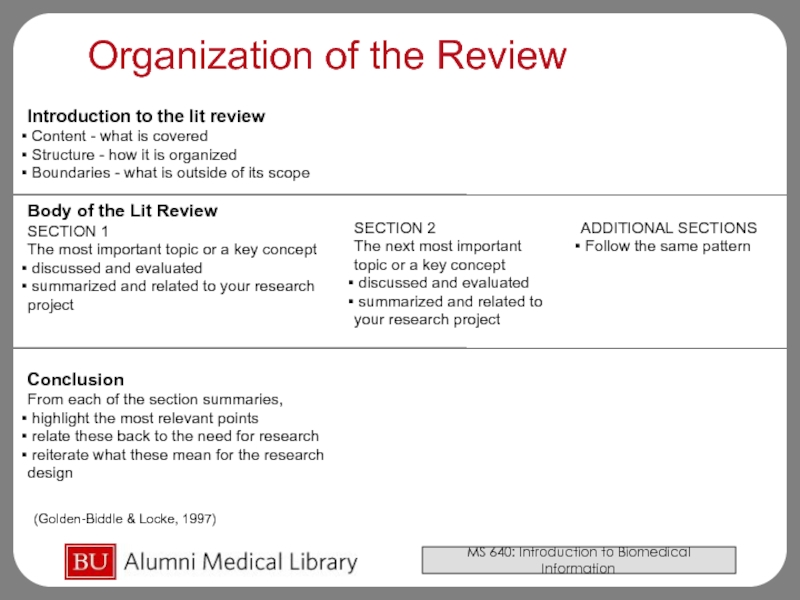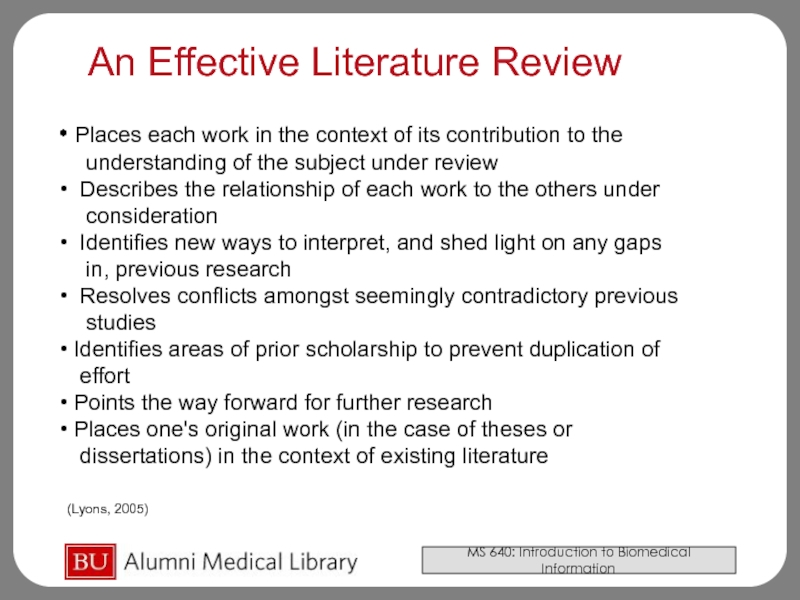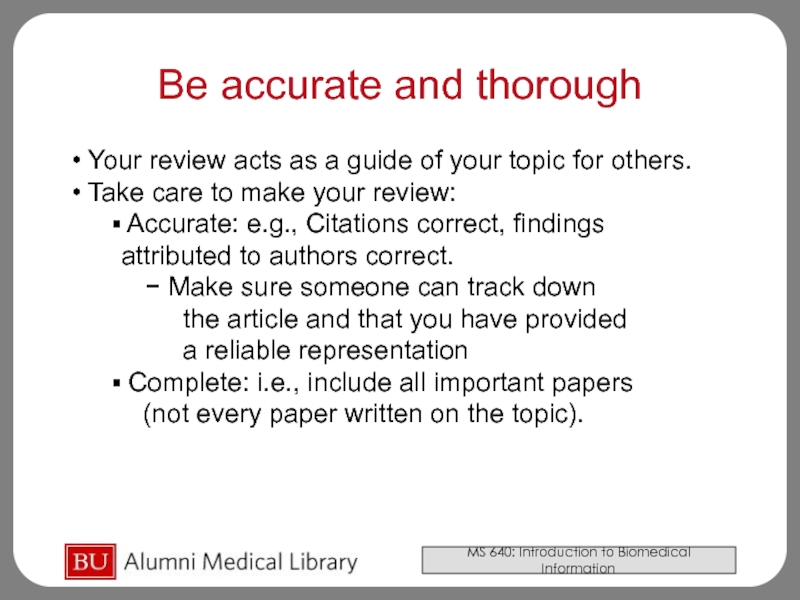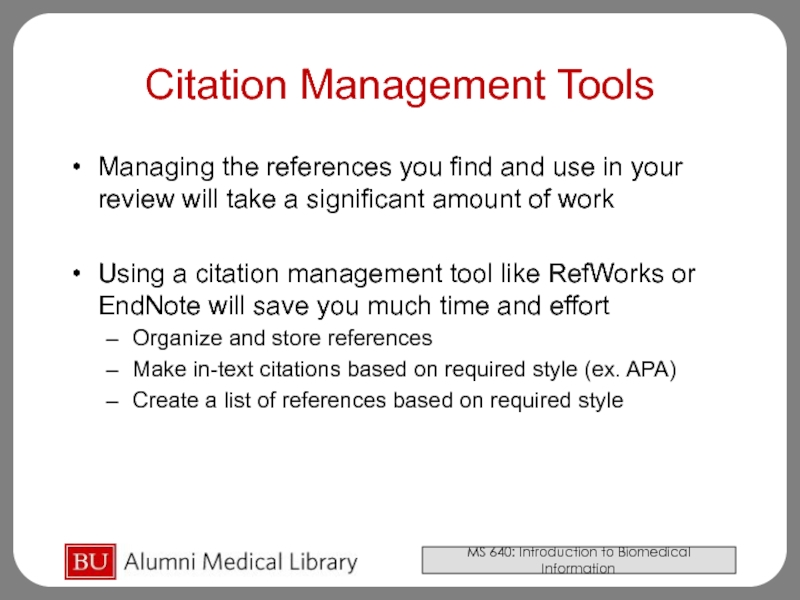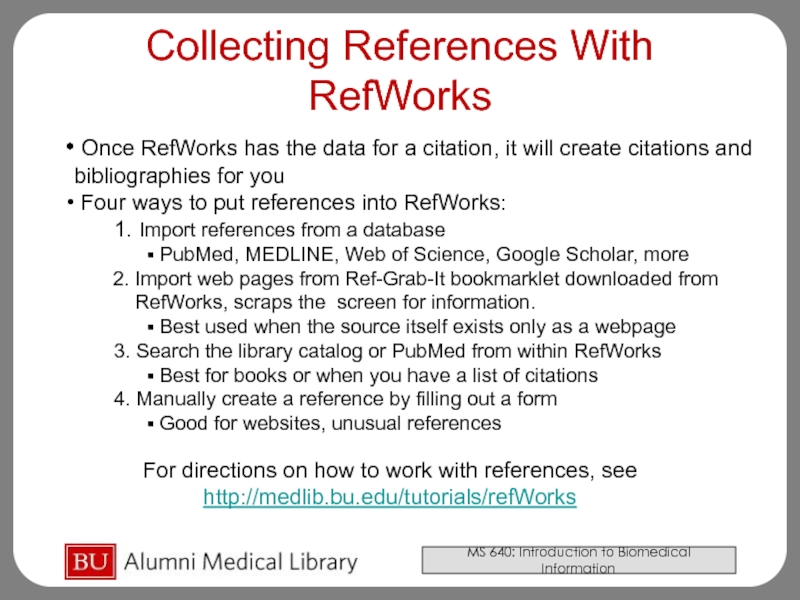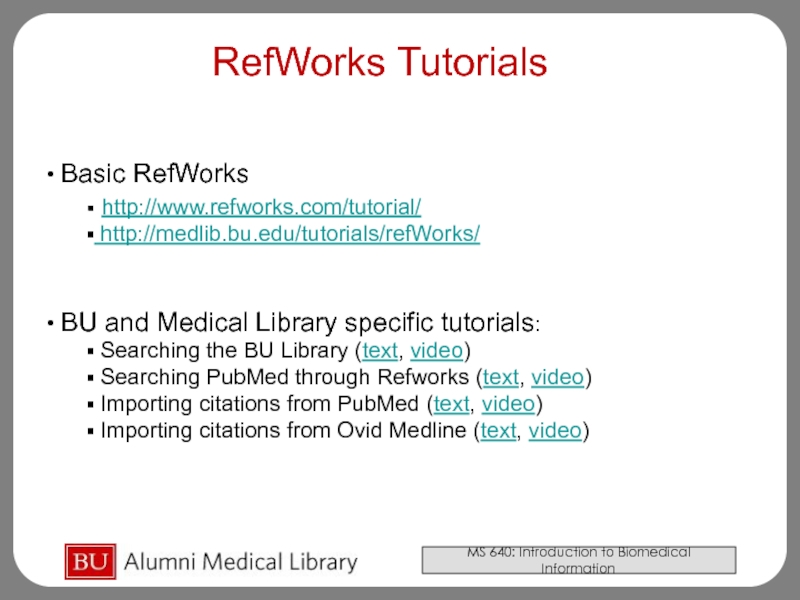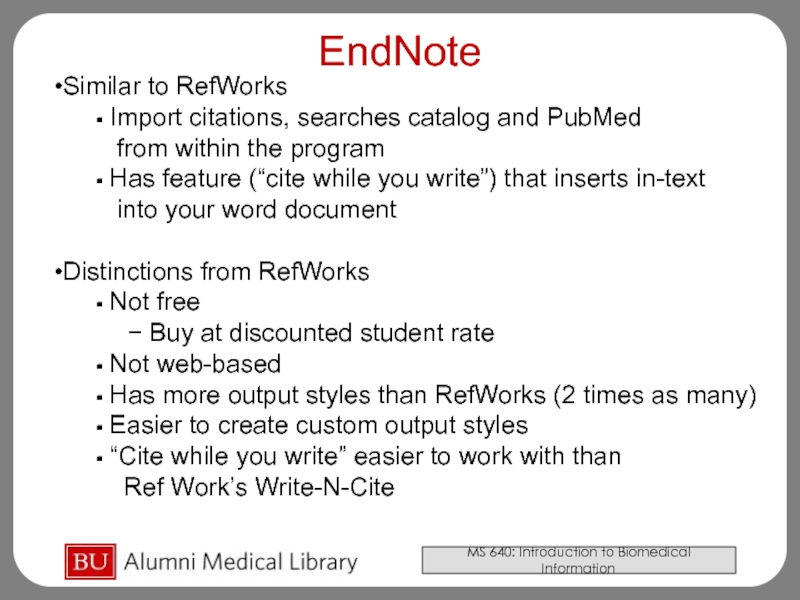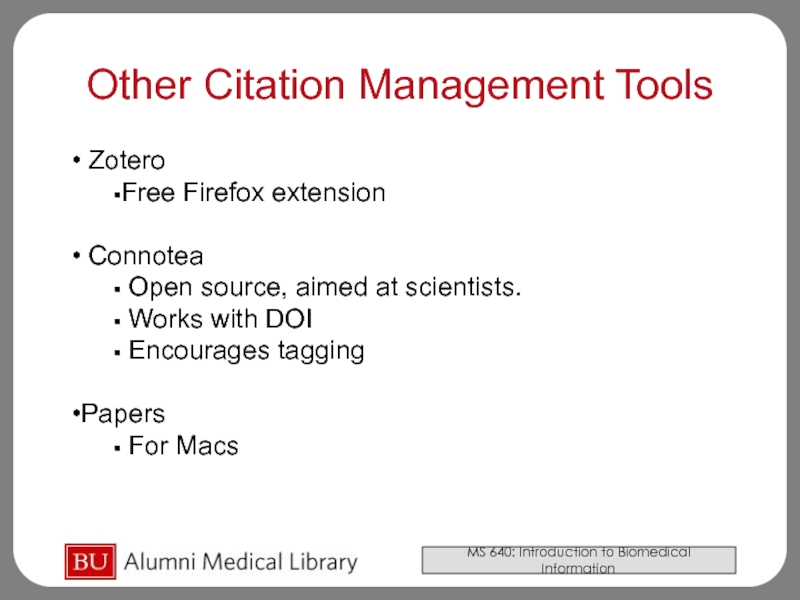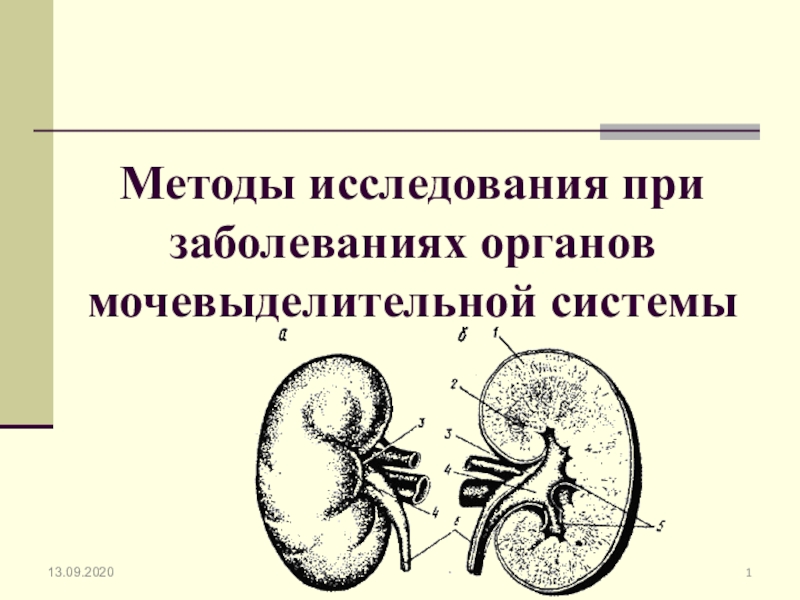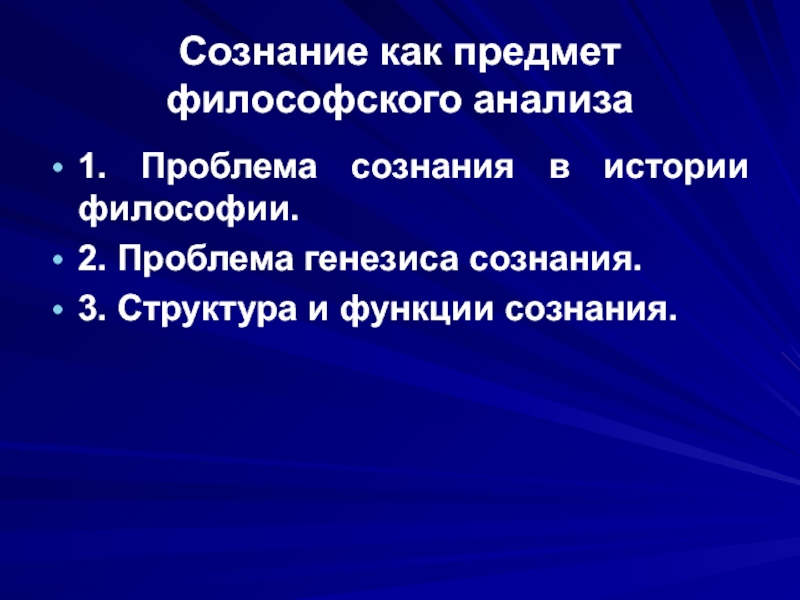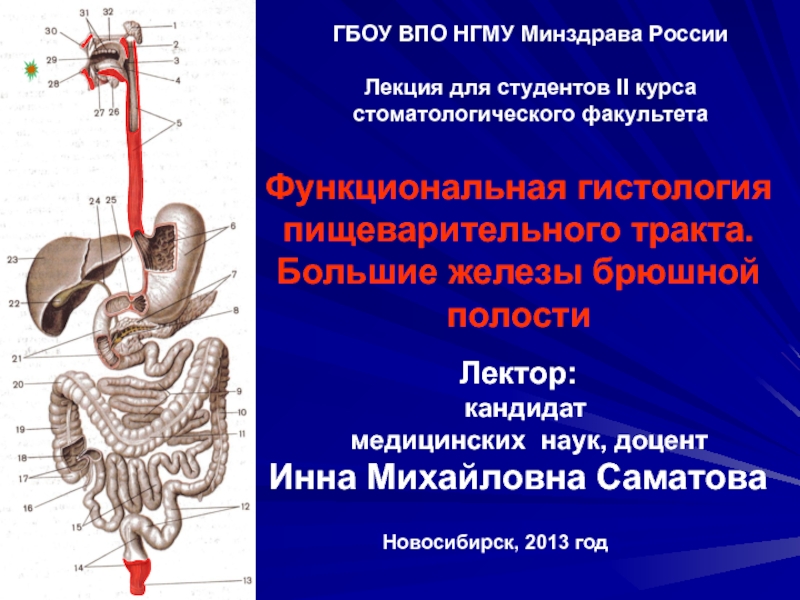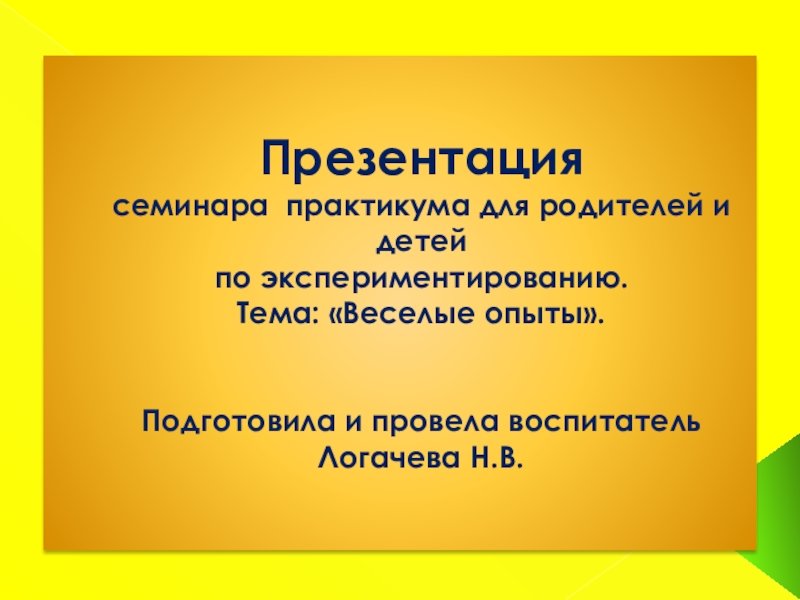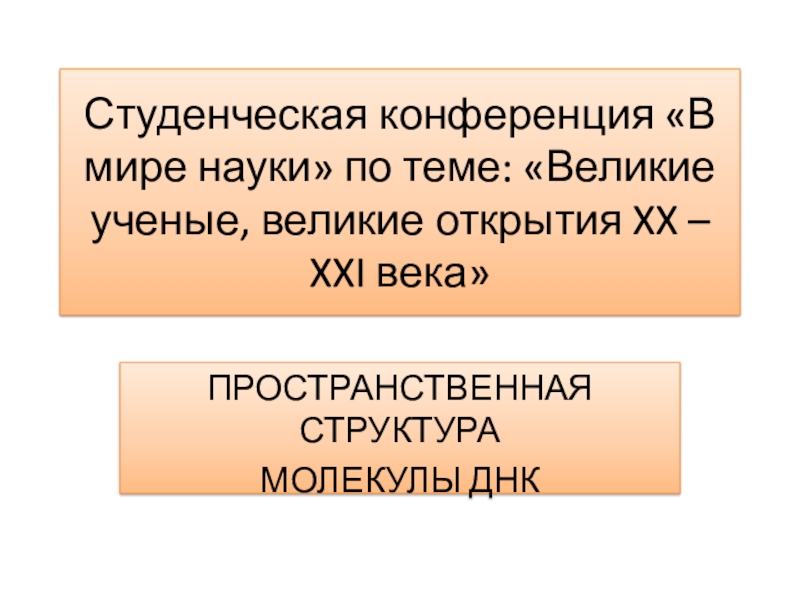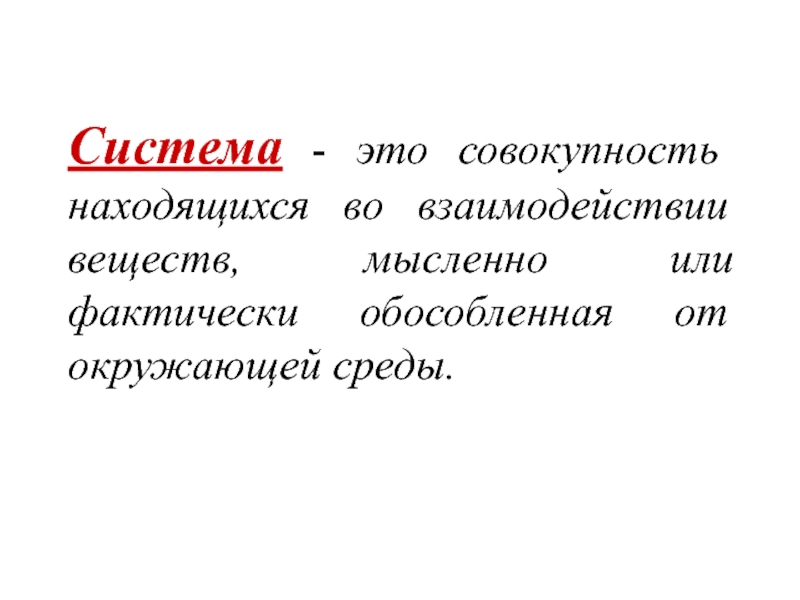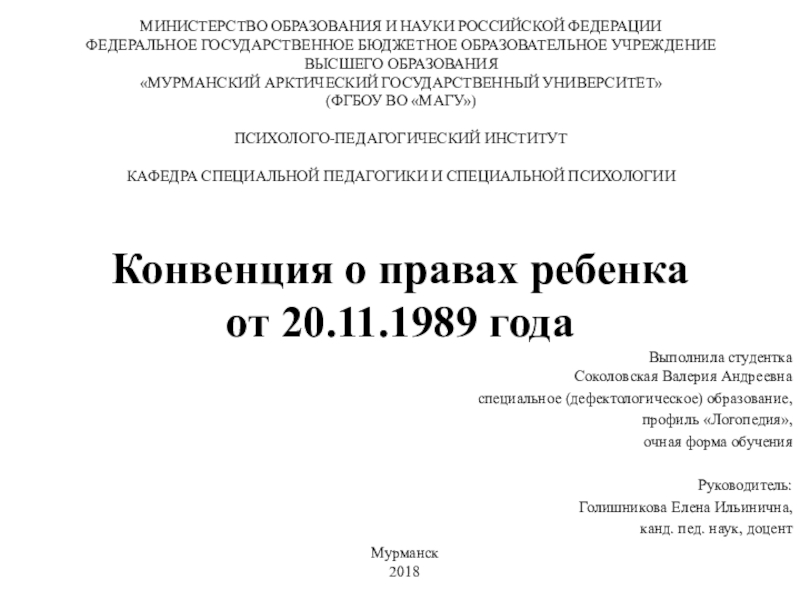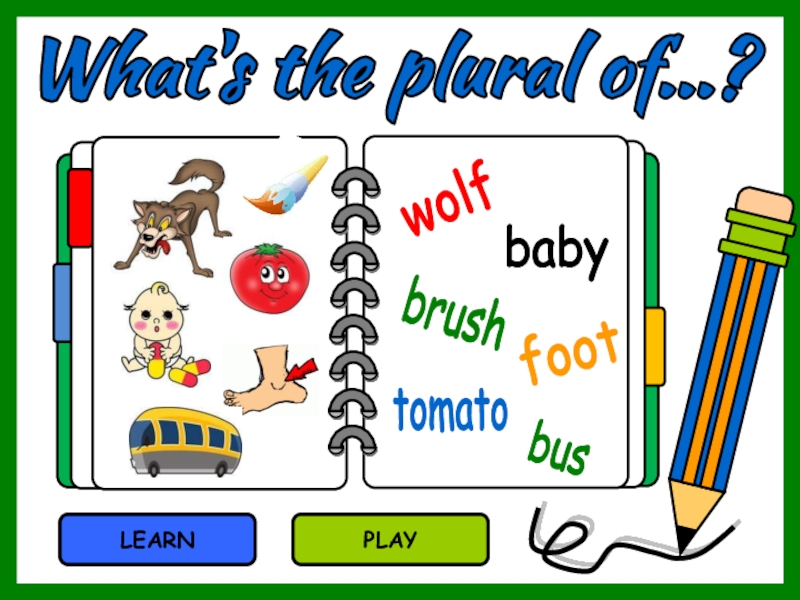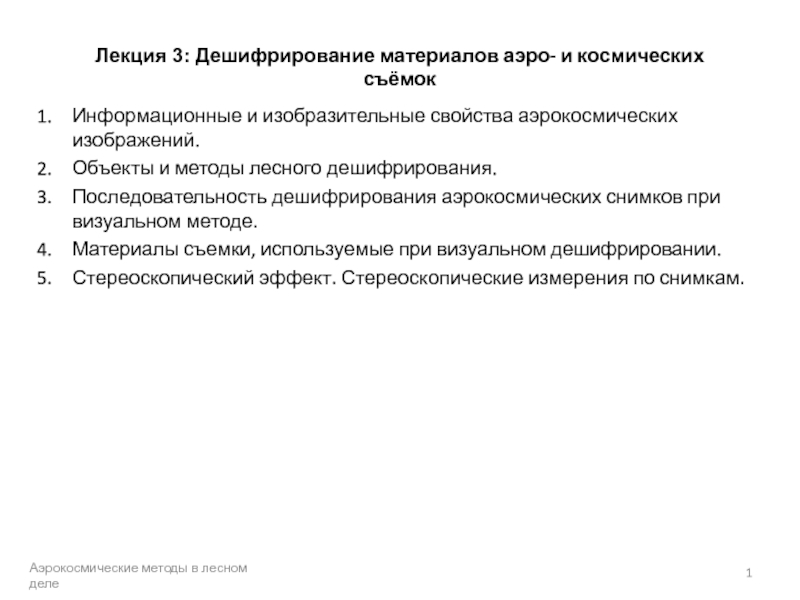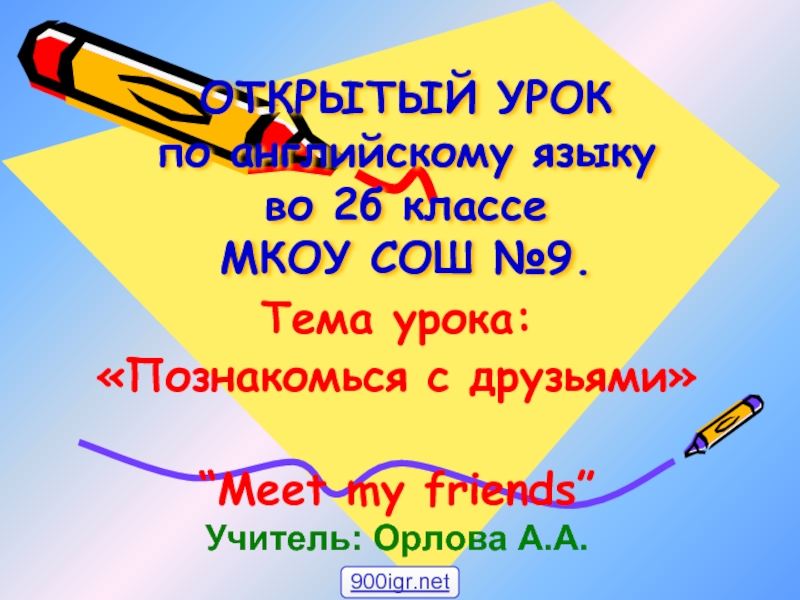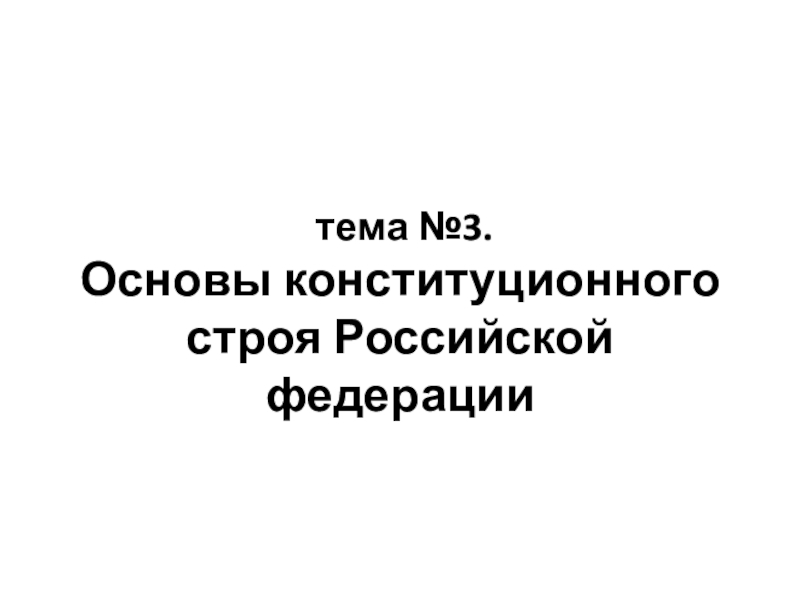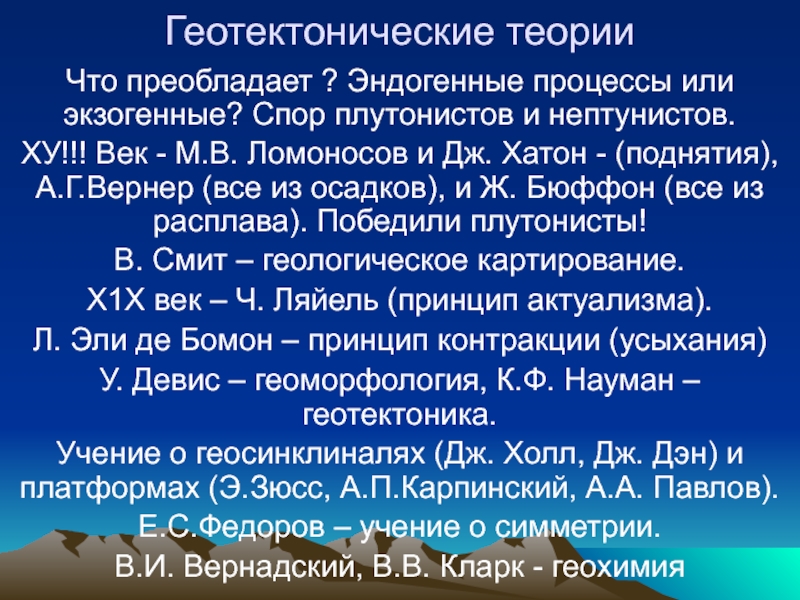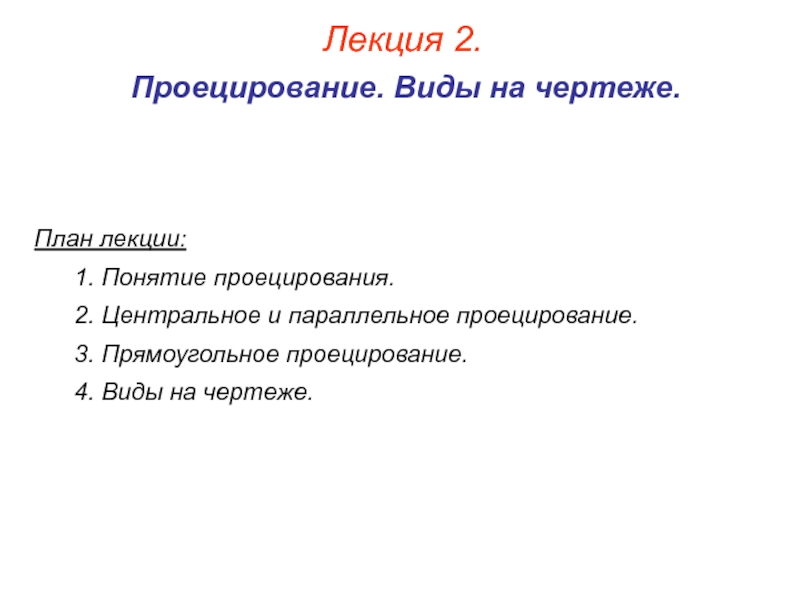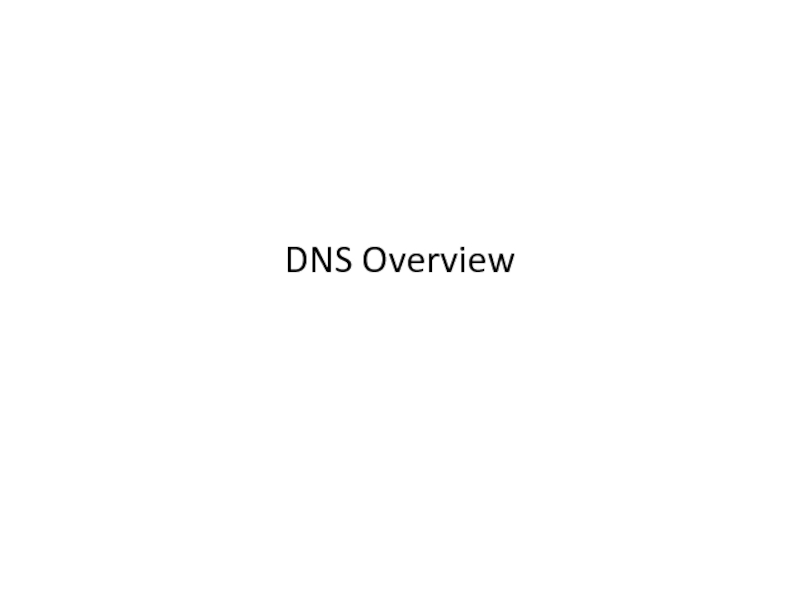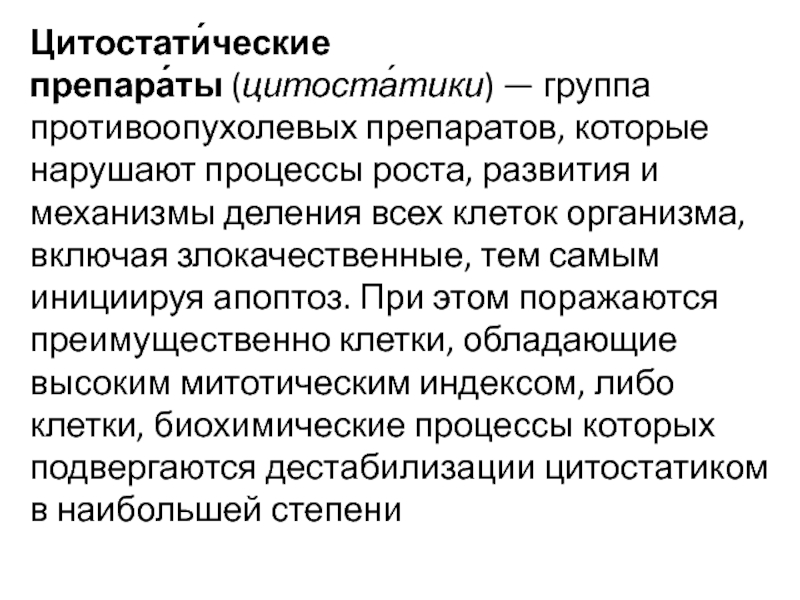Слайд 1
Research Tips
RefWorks/EndNote
How To Write A Literature Review
Слайд 2 A literature review
surveys scholarly articles, books and
other sources
(e.g. dissertations, conference proceedings) relevant
to a particular issue, area of research, or theory.
provides a short description and critical evaluation of
work critical to the topic.
offers an overview of significant literature published
on a topic.
(Lyons, 2005)
Definition of a Literature Review
Слайд 3For a review paper
2. For the introduction (and discussion)
of a research paper, masters thesis or dissertation
3. To embark
on a new area of research
4. For a research proposal
(Burge, 2005)
Literature Reviews are Conducted For
Various Reasons:
Слайд 4 Determine if proposed research is actually needed.
Even if
similar research published, researchers might
suggest a need
for similar studies or replication.
Narrow down a problem.
It can be overwhelming getting into the literature of a field of
study. A literature review can help you understand where
you need to focus your efforts.
Generate hypotheses or questions for further studies.
(Mauch & Birch, 2003)
Conducting a literature review
will help you:
Слайд 5
Background knowledge of the field of inquiry
Facts
Eminent
scholars
Parameters of the field
The most important ideas, theories,
questions and
hypotheses.
Knowledge of the methodologies common to the
field and a feeling for their usefulness and
appropriateness in various settings.
(Mauch & Birch, 2003)
Conducting a literature review
will give you:
Слайд 6 Formulate a problem - which topic or field is
being
examined and what are its component issues?
Search the literature for materials relevant to the
subject being explored.
searching the literature involves reading and
refining your problem
Evaluate the data - determine which literature makes a
significant contribution to the understanding of the topic
Analyze and interpret - discuss the findings and
conclusions of pertinent literature
Format and create bibliography
(Lyons, 2005)
Outline of Review Process
Слайд 7Tips on Formulating a Problem
Select a topic you are interested
in
You want to be fascinated throughout the process and
less likely to lose motivation.
Choose a topic with a feasible focus.
Keep the focus clear and defined and it will be easier to complete than something huge like "headaches“
Get Help - get it early and often.
Solicit opinions before you begin, review drafts once start them
You may want to start out with a general idea, review the literature of that area, and then refine your problem based on what you have found.
(Green, Johnson, & Adams, 2006)
Слайд 8 The literature included can be any format appropriate to
your topic.
Don’t restrict yourself to journal articles.
Look in
books – you’ll need to know and cite the work of
major contributors to the field. A lot of this in books,
especially annual reviews
Important Information can be found in reports,
conference proceedings, and other non-journal sources.
Search government websites and associations related
to your topic.
Look at library subject guides in your area to find the key databases additional resources
The “Literature” in the Review
Слайд 9Literature Search
Perform a preliminary search of the literature.
Search lit to
see what other work in the area of interest has
already been published.
Gives a preview of the number of articles available on the topic.
If your topic is already written about, select a slightly different topic or modify the focus of the objective.
Recent journal issues in areas central to the topic may provide leads to content that should be in the review.
Consult Web of Science’s Journal Citation Index for an idea of the most important journals in the field
Develop a list of subject headings that relate to themes of interest
Слайд 10Literature Search
Search across multiple databases and information resources.
It’s not
adequate to use Medline as your one and only resource
Read
the literature throughout the search process.
What you read will guide your subsequent searches and refine your topic.
Your search should help refine the topic and objective of the overview being written.
Слайд 11Think ahead
The more one learns about a subject, the more
questions come to mind.
Keep a list of questions and
hypotheses that come to your mind or that are mentioned in what you read.
These questions will help guide you when you are constructing your review
The questions will also guide you in discussing the implications of your own findings and the additional research directions your work supports or suggests.
(Mauch & Birch, 2003)
Слайд 12Save your references
Keep a record of the literature you
collect
Record where and when you retrieved the information
Use
a citation manager program like RefWorks
or EndNote
Better to record too many references than
have to return a few weeks or months hence
and spend hours trying to relocate documents
Слайд 13Data Evaluation: Selecting literature
Read widely
When you read for your literature
review, you are actually doing two things at the same
time:
Trying to define your research problem: finding a gap, asking a question, continuing previous research, counter-claiming
Trying to read every source relevant to your research problem
It is usually impossible to do the latter
you will need to identify the most relevant and significant works and focus on them.
(Asian Institute of Technology)
Слайд 14Data Evaluation: Selecting Literature
As you define your problem you will
more easily be able to decide what to read and
what to ignore.
Before you define your problem, hundreds of sources will seem relevant.
However, you cannot define your problem until you read around your research area.
This seems a vicious circle, but what should happen is that as you read you define your problem, and as you define your problem you will more easily be able to decide what to read and what to ignore.
(Asian Institute of Technology)
Слайд 15How To Read the Material
Reading for the big picture
Read
the easier works first
Skim the document and identify major concepts
After
you have a broad understanding of the
10 to 15 papers, you can start to see
patterns:
Groups of scientists argue or disagree with other groups. For example, Some researchers think x causes y, others that x is only a moderating variable
(Carroll, 2006)
Слайд 16Narrow your focus
Start from new material to old, general to
specific
starting with general topic will provide leads to specific areas
of interest and help develop understanding for the interrelationships of research
Note quality of journal, output of author
As you read and become more informed on the topic, you will probably need to go back and do more focused searches
Think, analyze, and weed out
Arrange to spend some review time with an experienced researcher in the field of study to get feedback and to talk through any problems encountered
(Mauch & Birch, 1993)
Слайд 17Read the Material Closer
Step 1: read the abstract
Decide whether to
read the article in detail
Step 2: read introduction
It explains why
the study is important
It provides review and evaluation of relevant literature
Step 3: read Method with a close, critical eye
Focus on participants, measures, procedures
Step 4: Evaluate results
Do the conclusions seem logical
Can you detect any bias on the part of the researcher?
Step 5: Take discussion with a grain of salt
Edges are smoothed out
Pay attention to limitations
(Carroll, 2006)
Слайд 18Analyze the Literature
Take notes as you read through each paper
that will be included in the review
In the notes include:
purpose
of study reviewed
synopsis of content
research design or methods used in study
brief review of findings
Once notes complete organize common themes together. Some people do this in a word document, others use index cards so they can shuffle them.
Some people construct a table of info to make it easier to organize their thoughts.
As you organize your review, integrate findings elicited from note taking or table making process.
(Green, Johnson, & Adams, 2006)
Слайд 19What do we already know in the immediate area concerned?
What
are the characteristics of the key concepts or the main
factors or variables?
What are the relationships between these key concepts, factors or variables?
What are the existing theories?
Where are the inconsistencies or other shortcomings in our knowledge and understanding?
What views need to be (further) tested?
What evidence is lacking, inconclusive, contradictory or too limited?
Why study (further) the research problem?
What contribution can the present study be expected to make?
What research designs or methods seem unsatisfactory?
(Asian Institute of Technology)
Questions To Consider In Your Review
Слайд 20 In the introduction, explain why the topic is important
and give the reader an idea of where you are
going in your paper.
Group research studies and other types of literature according to common denominators.
If you’ve taken notes before, the common themes are
more easily identifiable.
Some factors used to organize reviews are:
Conclusions of authors
Specific purpose
Objective
Chronology (this method will give the worst
impression, use only if it really makes sense to your
topic!)
(University of Wisconsin, 2006)
Construct the Literature Review
Слайд 21Summarize individual studies or articles
Use as much or as
little detail as each merits according to its comparative importance
in the literature
Space (length) denotes significance.
Don’t need to provide a lot of detail about the procedures used in other studies.
Most literature reviews only describe the main findings, relevant methodological issues, and/or major conclusions of other research.
Discuss major areas of agreement or disagreement
Tie the study into the current body of lit, make logical interpretations from the lit reviewed.
If there is no discussion of the relevance of the overview to other work in the field, or if there is no interpretation of the literature, it may signal the author has not thoroughly investigated the topic.
Construct The Literature Review
(University of Wisconsin, 2006)
Слайд 22Introduction to the lit review
Content - what is covered
Structure - how it is organized
Boundaries - what is
outside of its scope
Body of the Lit Review
SECTION 1
The most important topic or a key concept
discussed and evaluated
summarized and related to your research project
Conclusion
From each of the section summaries,
highlight the most relevant points
relate these back to the need for research
reiterate what these mean for the research design
Organization of the Review
SECTION 2
The next most important
topic or a key concept
discussed and evaluated
summarized and related to your research project
ADDITIONAL SECTIONS
Follow the same pattern
(Golden-Biddle & Locke, 1997)
Слайд 23 Places each work in the context of its contribution
to the
understanding of the subject under review
Describes the relationship of each work to the others under
consideration
Identifies new ways to interpret, and shed light on any gaps
in, previous research
Resolves conflicts amongst seemingly contradictory previous
studies
Identifies areas of prior scholarship to prevent duplication of
effort
Points the way forward for further research
Places one's original work (in the case of theses or
dissertations) in the context of existing literature
(Lyons, 2005)
An Effective Literature Review
Слайд 24Be accurate and thorough
Your review acts as a guide
of your topic for others.
Take care to make
your review:
Accurate: e.g., Citations correct, findings attributed to authors correct.
Make sure someone can track down
the article and that you have provided
a reliable representation
Complete: i.e., include all important papers
(not every paper written on the topic).
Слайд 25Research Tips
Use the A-Z guide to find key databases and
other resources related to your topic
Consult with a librarian for
resource recommendations and how to use them.
Talk to experienced researchers in the field, they can recommend resources and identify key works and authors
Look at reviews in completed dissertations and reports from your program to get an idea of the format and requirements
When collecting references, use a citation management tool like RefWorks or EndNote
Слайд 26Citation Management Tools
Managing the references you find and use in
your review will take a significant amount of work
Using a
citation management tool like RefWorks or EndNote will save you much time and effort
Organize and store references
Make in-text citations based on required style (ex. APA)
Create a list of references based on required style
Слайд 27 Free program (for BU affiliates) that collects and formats
the references used in scholarly writing.
You can save
the references you plan to cite in
your review and ensure that they are automatically
formatted in the appropriate style: MLA, APA,
Chicago, hundreds more.
Any member of the BU community (students, faculty, staff) is eligible to register for free personal accounts: you can sign up at http://www.bu.edu/library/refworks/.
Web-based service
Access your account and work with your references
from any internet-capable computer around the
world.
RefWorks
Слайд 28Collecting References With RefWorks
Once RefWorks has the data for
a citation, it will create citations and bibliographies for you
Four ways to put references into RefWorks:
1. Import references from a database
PubMed, MEDLINE, Web of Science, Google Scholar, more
2. Import web pages from Ref-Grab-It bookmarklet downloaded from
RefWorks, scraps the screen for information.
Best used when the source itself exists only as a webpage
3. Search the library catalog or PubMed from within RefWorks
Best for books or when you have a list of citations
4. Manually create a reference by filling out a form
Good for websites, unusual references
For directions on how to work with references, see http://medlib.bu.edu/tutorials/refWorks
Слайд 29RefWorks Tutorials
Basic RefWorks
http://www.refworks.com/tutorial/
http://medlib.bu.edu/tutorials/refWorks/
BU and
Medical Library specific tutorials:
Searching the BU Library (text, video)
Searching PubMed through Refworks (text, video)
Importing citations from PubMed (text, video)
Importing citations from Ovid Medline (text, video)
Слайд 30EndNote
Similar to RefWorks
Import citations, searches catalog and PubMed
from
within the program
Has feature (“cite while you write”) that
inserts in-text
into your word document
Distinctions from RefWorks
Not free
Buy at discounted student rate
Not web-based
Has more output styles than RefWorks (2 times as many)
Easier to create custom output styles
“Cite while you write” easier to work with than
Ref Work’s Write-N-Cite
Слайд 31Other Citation Management Tools
Zotero
Free Firefox extension
Connotea
Open
source, aimed at scientists.
Works with DOI
Encourages tagging
Papers
For
Macs
Слайд 32References for this module
Asian Institute of Technology. Writing up research:
Using the literature. Retrieved 1/22/2009, 2009, from http://www.languages.ait.ac.th/EL21LIT.HTM
Burge, C.,
7.16 Experimental Molecular Biology: Biotechnology II, Spring 2005. (Massachusetts Institute of Technology: MIT OpenCouseWare), Retrieved 12/15/2008, from http://ocw.mit.edu. License: Creative Commons BY-NC-SA
Carrol, J., 15.301 Managerial Psychology, Fall 2006. (Massachusetts Institute of Technology: MIT OpenCouseWare). Retrieved 12/15/2008, from http://ocw.mit.edu. License: Creative Commons BY-NC-SA
Golden-Biddle, K, & Locke, K (1997). Composing Qualitative Research. Thousand Oaks, CA: Sage.
Green, B. N., Johnson, C. D., & Adams, A. (2006). Writing narrative literature reviews for peer-reviewed journals: Secrets of the trade. Journal of Chiropractic Medicine, 5(3), 101-117.
Lyons, K. (2005). UCSC library - how to write a literature review. Retrieved 1/22/2009, 2009, from http://library.ucsc.edu/ref/howto/literaturereview.html
Mauch, J. E., & Birch, J. W. (1993). Guide to the successful thesis and dissertation : A handbook for students and faculty (3rd , rev. and expand ed.). New York: Marcel Dekker.
University of Wisconsin. (2006). UW-madison writing center writer's handbook. Retrieved 1/22/2009, 2009, from http://www.wisc.edu/writing/Handbook/ReviewofLiterature.html
